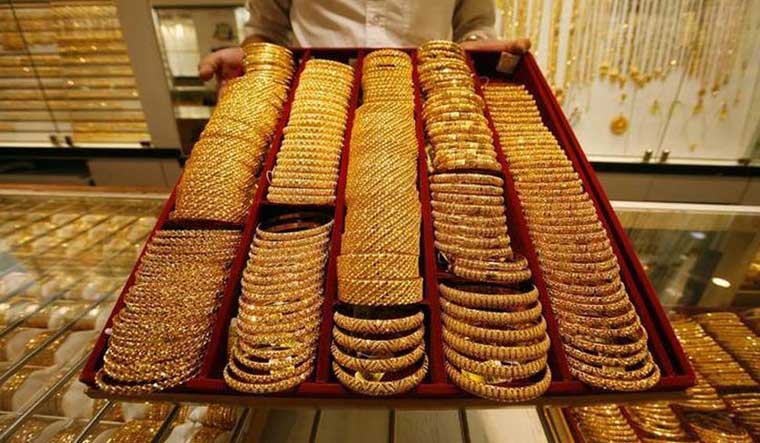The Indian government may be keen on making hallmarking of jewellery mandatory but the industry body has raised several issues, including limited availability of hallmarking centres and limited number of categories of purity of gold, which it feels are speed bumps in implementing the move.
Hallmarking will help consumers understand the quality of gold jewellery they buy. While several jewellers already sell hallmarked jewellery, the government wants to make it mandatory for all jewellers. Jewellery hallmarking has also been recommended by the NITI Aayog Panel on gold policy.
In November 2017, Union consumer affairs Minister Ram Vilas Paswan had told reporters that gold jewellery hallmarking may be done soon. However, that has not happened yet. Some suggest that the rules may be notified in the coming financial year. However, industry officials say the government must address the speed bumps first.
The biggest concern is the limited number of hallmarking centres of the Bureau of Indian Standards, which will make it difficult for jewellers based in the far flung areas of the country to get their products hallmarked. It will not only be a logistical issue, but there will be security concerns as well in transporting the jewellery to the hallmarking centre.
“There are close to 600 districts in India. However, currently 500 hallmarking centres are there only in a few districts. Majority of the industry is unable to reach these centres and benefit from them. We need to expand hallmarking centres across the country,” said Ashok Minawala, former chairman of the All India Gems and Jewellery Trade Federation (GJF).
As per the proposed rules for hallmarking of gold jewellery, there will be three categories of purity – 14 carat, 18 carat and 22 carat. However, in some states 21 carat and 23 carat jewellery is also popular. Therefore, jewellers want clarity on that front too.
“Presently, there is a situation where only three purity categories are being addressed. That is creating a problem in certain states. For instance, in Maharashtra there is a huge sale of 23 carat gold jewellery, in Madhya Pradesh and Uttar Pradesh, there is a huge sale of 21 carat jewellery. In the South, there is 12 carat gold that is sold for stone studded jewellery. There are different purities of gold that need to be added so that the consumer doesn't need to change his preferences,” said Minawala.
Even as there is still an uncertainty, on when the mandatory norms will be notified by the government, GJF officials say they have already recommended jewellers to start work on the existing inventory, which may not yet be hallmarked, so that they will be ready from their end.
The gems and jewellery industry has been rattled due to the alleged Rs 13,000 crore fraud by billionaire diamantaire Nirav Modi at Punjab National Bank.
Lenders have tightened credit availability to jewellers in the wake of the fraud, Nitin Khandelwal, GJF chairman had told THE WEEK earlier.
Minawala said on Tuesday that the industry body has now sought a meeting with the banks to get the issues addressed.
Business has been slow for jewellers in March. While Minawala says its always a case in March, due to the fiscal year-ending, he also feels that the fraud has created a mistrust about the industry among consumers. The expectation now is that sales will pick up around the festive auspicious occasion of Akshaya Tritiya in April.
India's gems and jewellery industry is currently expected to around Rs 4.50 lakh crore, and is expected to touch Rs 8 lakh crore by 2025, GJF estimates.
GJF has announced a two-day conclave called Manthan next month, where several top executives from across industries will address jewellers. GJF hopes this event, which has been in the works for some time, will be useful to rejuvenate the jewellery industry and establish the integrity of the sector.


